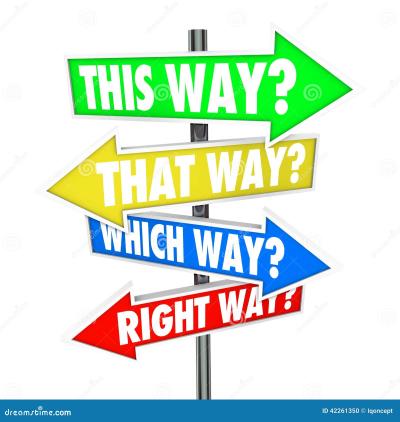IMAGO’s visual content offers a wealth of resources for educational websites, making learning more engaging and effective. Here, we explore how educational platforms can leverage IMAGO’s diverse imagery to improve teaching methods, enhance user experience, and support various learning styles.
Understanding IMAGO’s Visual Content

IMAGO provides a rich library of high-quality images, illustrations, and graphics tailored for educational purposes. Recognizing the power of visuals in capturing attention and facilitating comprehension, IMAGO‘s content is designed to cater to various subjects and topics. By utilizing IMAGO‘s extensive collection, educators can find visuals that resonate with their curriculum, enhancing the overall lesson plan.
These visuals can serve different purposes, from sparking interest in a subject to reinforcing complex concepts that might be difficult to convey through text alone. With images spanning a diverse range of themes, educators can pick and choose rich, contextually relevant visuals that elevate the learning experience, making information easier to digest and remember.
Enhancing Learning Experiences with Visuals

Using IMAGO’s visual content can significantly enhance learning experiences. Below are key strategies for integrating visuals effectively:
- Contextual Learning: Pairing images with educational content to provide context and relevance, helping students connect theories with real-world applications.
- Diverse Learning Styles: Catering to visual learners by incorporating varied imagery, catering to different preferences, and promoting inclusivity in education.
- Interactive Elements: Creating interactive lessons using visuals to engage students through quizzes and presentations, making learning active rather than passive.
- Storytelling: Utilizing visuals to narrate stories that enhance comprehension and retention, turning lessons into memorable experiences.
- Visual Summaries: Employing graphics as visual summaries to condense information, providing students with easy-to-understand overviews of complex topics.
Using Images to Improve Engagement on Educational Websites

When it comes to educational websites, capturing and retaining visitors’ attention is crucial. Images can play a significant role in improving engagement rates by making content more visually appealing and easier to digest. Here are some effective ways to leverage images on your site:
- High-Quality Visuals: Invest in high-quality images relevant to your educational content. Users are more likely to stay on a page if it looks professional and engaging.
- Illustrative Examples: Use images to illustrate concepts. For instance, if you’re teaching biology, include photos of plants or animals to help learners visualize what they’re studying.
- Diverse Media Types: Don’t just stick to static images. Incorporate interactive elements like image sliders or clickable galleries that allow users to explore content in a fun way.
- Emotional Connection: Choose images that evoke emotions. A happy classroom scene or a focused student engaged with learning materials can create a positive atmosphere.
Remember, the right images can break up text-heavy sections, making content feel less daunting. Use captions and descriptions to provide context and reinforce learning, ensuring that even the visuals contribute to your educational goals!
Integrating Infographics for Simplified Learning

Infographics are a powerful tool in educational content, combining information and visuals to create a comprehensive yet digestible format. They are particularly beneficial for conveying complex ideas and data in a simplified manner. Here’s how to effectively integrate infographics into your educational website:
- Simplification of Data: Use infographics to distill large amounts of information into easy-to-understand visuals. This helps learners grasp difficult concepts quickly.
- Step-by-Step Guides: Create infographics that outline processes or steps in a straightforward way. These can serve as quick-reference guides for students.
- Visual Hierarchies: Infographics can guide learners through a topic by emphasizing key points through varied font sizes, colors, and layouts, helping users to prioritize information.
- Encouraging Sharing: Infographics are shareable content. They are likely to be shared on social media, improving the visibility of your educational material and reaching a wider audience.
When designing infographics, ensure that they are clear, concise, and visually appealing. Tools like Canva or Piktochart can help you create stunning visuals that not only captivate but also enhance learning outcomes on your educational website.
Creating Interactive Content with IMAGO Visuals
In today’s digital landscape, engaging your audience is crucial. Interactive content not only captures attention but also enhances learning and retention. With IMAGO‘s stunning visuals, you can easily create immersive experiences for your users.
Here are some effective ways to leverage IMAGO visuals for interactive educational content:
- Quizzes and Assessments: Integrate striking visuals into quizzes. For example, use IMAGO images to illustrate questions or present scenarios, making assessments more engaging.
- Infographics: Combine IMAGO visuals with data to create interactive infographics. Users can hover or click on sections to reveal more information, stats, or related topics.
- Interactive Timelines: Use IMAGO history-related visuals to build an engaging timeline. Allow users to click on specific events to learn more, adding depth to their understanding.
- Gamified Learning: Incorporate visuals in gamified learning modules. With IMAGO illustrations, you can design avatars, backgrounds, or challenges that make learning a fun experience.
- Video Content: Create tutorial videos or lectures featuring IMAGO visuals, including animations or overlays. This caters to visual learners and keeps engagement high.
By employing these strategies, you can harness the power of IMAGO visuals to create interactive content that not only educates but also engages your audience deeply.
Best Practices for Choosing the Right Visual Content
Selecting the appropriate visuals for your educational website can be a game-changer. Here are some best practices to ensure you make the most of IMAGO’s offerings:
- Align with Your Educational Goals: Identify the purpose of your content. Is it to inform, inspire, or engage? Choose visuals that support your objectives and resonate with your audience.
- Consider Audience Demographics: Understand your target audience. A younger audience might prefer vibrant, dynamic visuals, while an older demographic may favor more subdued, traditional designs.
- Use High-Quality Images: Always opt for high-resolution visuals. IMAGO provides stunning quality, so ensure your images are crisp and clear to enhance professionalism.
- Maintain Consistency: Consistent visual style across your website fosters familiarity. Choose a color palette, font styles, and imagery that reflects your brand identity and is coherent throughout.
- Keep Accessibility in Mind: Make sure your visuals include alt text descriptions for visually impaired users. This practice not only supports inclusivity but also enhances SEO.
By applying these best practices, you can effectively choose visuals that enhance your educational content, ensuring that your messages are conveyed clearly and effectively while captivating your audience.
Measuring the Impact of Visual Content on Learning Outcomes
When it comes to educational websites, the effectiveness of visual content can significantly influence learning outcomes. To ensure that your visuals are making a positive impact, it’s essential to measure their effectiveness. Here are some strategies to help you assess the impact of visual content on learning:
- Analyze Engagement Metrics: Keep an eye on how users interact with your visuals. Metrics such as time spent on a page, click-through rates, and the number of shares can provide insights into engagement. High engagement often correlates with effective content.
- Conduct Surveys and Feedback: After users interact with visual content, ask for feedback. Simple surveys can help gauge whether the users found the visuals helpful or informative. Questions like, “Did the image help clarify the topic?” can yield valuable insights.
- Track Performance in Assessments: Compare the performance of learners before and after exposure to visual content. If students retain more information or perform better in assessments related to the visuals, that’s a strong indicator of effectiveness.
- Utilize A/B Testing: Experiment with different styles of visuals to see which format resonates more with your audience. By presenting two variations of content and analyzing the results, you can determine which visuals foster better understanding or retention.
- Monitor Behavioral Changes: Look for changes in how users approach learning. Are they more likely to explore related topics? Do they engage in discussions about the visuals shared? These behavioral changes can highlight the content’s impact on their learning journey.
Measuring the impact of your visual content is not a one-time task; it should be an ongoing process. By continually assessing and refining your visuals, you can maximize their effectiveness in supporting student learning.
Case Studies of Successful Educational Websites Using IMAGO
To truly understand the power of IMAGO’s visual content, let’s take a look at a couple of case studies that showcase how educational websites successfully utilized these tools to enhance their offerings.
Case Study 1: Science Explore
Science Explore is an educational platform aimed at middle school students. By integrating IMAGO’s vibrant infographics and interactive diagrams, they transformed complex scientific concepts into visually engaging content. Here’s what they accomplished:
- Improved Retention Rates: After incorporating visual content, retention rates among students increased by 30%.
- Higher User Engagement: Time spent on pages with visuals was double compared to text-only pages.
- Enhanced Interactivity: The interactive elements allowed users to experiment virtually, which resulted in a significant uptick in concept application during assessments.
Case Study 2: Math Mastery
Math Mastery, a platform dedicated to helping students grasp mathematical concepts, utilized IMAGO’s tools to create step-by-step visual guides for problem-solving. The outcomes were impressive:
- Increased User Satisfaction: Surveys indicated that 85% of students felt more confident in solving complex problems after using visual aids.
- Reduced Drop-Off Rates: The site saw a 40% decrease in users abandoning lessons early when visuals were included.
- Better Community Engagement: The visuals not only helped learners but also encouraged them to share the resources with peers, fostering a collaborative learning environment.
These case studies illustrate how effective visual content provided by IMAGO can resonate with learners and enhance educational experiences. By analyzing their success, we can glean valuable insights into how to implement similar strategies on our platforms.
Top 5 Ways to Use IMAGO’s Visual Content for Educational Websites
In today’s digital age, visual content plays a crucial role in enhancing the learning experience on educational websites. IMAGO offers a rich library of visual resources that can be harnessed to make educational materials more engaging and effective. Here are the top five ways to implement IMAGO’s visual content:
- Interactive Infographics:
Use IMAGO’s infographics to present complex data in a simplified manner. These elements help break information down visually, making it easier for students to grasp.
- Visual Storytelling:
Leverage IMAGO’s high-quality images to create compelling narratives around your educational topics. Visual storytelling can enhance retention and encourage students to connect with the content.
- Enhanced Presentations:
Integrate IMAGO’s visuals into your presentations. High-resolution images and visuals can make your slides more appealing and help illustrate key points effectively.
- Social Media Engagement:
Utilize IMAGO’s visuals for promoting educational content on social media. Engaging visuals can increase shares and interactions, driving traffic back to your website.
- Supplementary Learning Materials:
Embed IMAGO’s visuals in e-books, worksheets, or study guides. This not only enhances the appearance but also aids in diving deeper into the subject matter with visual references.
By effectively utilizing IMAGO’s visual content, educational websites can create a more interactive and impactful learning environment. The integration of these visuals will not only enhance user engagement but also facilitate better understanding and retention of information among learners.


